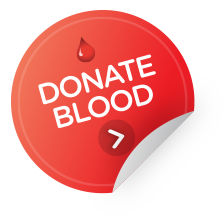Working smarter to minimise blood and blood product wastage
A certain level of discards of blood and blood products is both inevitable and appropriate to ensure that products are available where and when they are clinically necessary. However, where there is a proportion of discards of blood and blood products that is neither inevitable nor appropriate, this is defined as wastage.
The National Blood Management Improvement Strategy 2018-2024 (Blood Management Strategy) has been developed by the National Blood Authority (NBA) to improve management and reduce wastage of blood and blood products.
 National Blood Product Management Strategy 2018 - 2024.pdf
National Blood Product Management Strategy 2018 - 2024.pdf National Blood Product Management Strategy - 2018 - 2024.docx
National Blood Product Management Strategy - 2018 - 2024.docx
The Statement of National Stewardship Expectations for the Supply of Blood and Blood Products, endorsed by Australian Health Ministers in November 2010, confirms the expectation that all health service providers will implement measures to appropriately manage blood and blood products. This is further supported by Standard 7: Blood Management of the National Safety and Quality Health Service (NSQHS) Standards 2nd edition, which requires health service organisations to effectively manage the availability, storage, safety, prescribing and wastage minimisation of blood and blood products.
Data and system enhancements
A range of reports are available for health providers on BloodNet allowing them to monitor inventory though blood orders, issues, transfers (including age at transfer) and wastage down to the ABO group and discard site. The reports provide the discards as a percentage of issues rates for the facility, similar sites, state and nationally as well as benchmark targets. Inventory and discard reporting include non-fresh products supplied by Lifeblood.
National barcoding policy
The NBA is reviewing the National Barcoding Policy to assist health service organisations with the move to the globally recognised standards of ISBT 128 and GS1 barcode symbologies. The adoption of these barcodes aims to enhance safety and supply security; improve inventory management and financial sustainability; increase efficiencies; and facilitate global compliance and benchmarking. More information on this issue is here.
Establishing targets for discard rates
Discard target rates have been established for red blood cells, platelets, clinical fresh frozen plasma and cryoprecipitate. Many health providers access the targets from BloodNet reports and use them to benchmark their wastage rates at a peer, state and national level. The target rates will be extended to account for differences in metropolitan, regional and rural health service organisation locations. Discard targets are being developed for non-fresh blood products.
Manufacturing cost now on all blood component labels
All fresh blood components supplied by Lifeblood and immunoglobulin products include a cost indicator printed on the label. More information on this issue is here.
Guidelines for blood product management improvement
The NBA has developed a number of tools to assist health providers in implementing better practice processes associated with good inventory management practices such as ordering, receipt, storing, handling and issuing of blood products. Additional guidelines and tools are under development to support health service organisations meet the NSQHS Blood Management Standard.
- Managing Blood and Blood Product Inventory: Guidelines for Australian Health Providers including 10 tips to help manage your blood product inventory poster, Module 1: Managing Blood and Blood Product Transfers and Module 2: Ig Inventory Management Guidelines Better Practice Case Studies
- The National Inventory Management Framework (NIMF)
- Stop the Waste! promotional items
Under development
- Inventory Management Guidelines modules for managing Red Blood Cells and Platelets
- Guidance and tools to support health and service organsiations meet the NSQHS Blood Management Standard
- Contingency management guidance for health providers
- New promotional items to promote blood product management
- New Better Practice Case Studies to assist with implementing the NSQHS Blood Management Standard
Addressing systemic issues
Identifying key contributory factors to unnecessary wastage is a high priority, with specific proposals to be developed to address systemic issues. The NBA has produced tools to assist with the transfer of product between providers including Managing Blood and Blood Product Transfers to improve health provider confidence with product cold chain integrity and a Better Practice Case Study on converting unused thawed clinical fresh frozen plasma to extended life plasma, thus reducing its wastage rates. Identified issues for early consideration include:
- supporting the implementation of the NSQHS Blood Management Standard;
- reducing breakages to fresh frozen plasma bags during handling and thawing for use; and
- supporting a nationally coordinated research and development effort to identify evidence gaps, and enable responses to emerging evidence and new technologies in the blood sector.
The NBA is always interested in hearing your suggestions and ideas. Please email support@blood.gov.au.
Promotional campaigns
A targeted range of wastage reduction promotional material have been developed by the NBA and are available for order including swing-tags for blood bags, posters, magnets and wheelie bin pen holders aimed at clinical staff. The promotional material is designed for use by laboratory staff, transfusion nurses and clinical champions to move the discussion of blood product management from the laboratory to clinical areas such as wards or operating theatres. The current range of promotional material is undergoing a full review and your suggestions are welcome at support@blood.gov.au.
Education and training
The NBA is involved in a number of initiatives to engage with, educate and support health providers on important issues such as improving inventory management, minimising wastage of blood and blood products and implementing the NSQHS Blood Management Standard by showcasing best practice in the sector through:
- relevant case studies,
- an educating presence at conferences with booths, workshops and sponsoring speakers, and
- organising and financially supporting four National Blood Symposiums.
The NBA will continue to provide support for the implementation of the NSQHS Blood Management Standard with a focus on identifying and developing education and training requirements.
Enhanced collaboration, promotion and communication
The NBA has continued to develop collaborative networks across the blood sector to ensure the widespread adoption and successful implementation of blood product management improvement measures, for example the Wastage Summits held in two jurisdictions.
National discard data and graphs
The public release of high-level summary discard data by health provider enhances transparency and accountability. These graphs provide a snapshot of national red blood cells and platelets discards in Australia over time. While hard work is reducing the wastage rate, the 2022-23 financial year saw 7,920 red blood cell donations discarded at a cost of approximately $2.8M. The graphs show the rate of Discards as a Percentage of Issues (DAPI). Supplier faults are excluded unless otherwise stated.
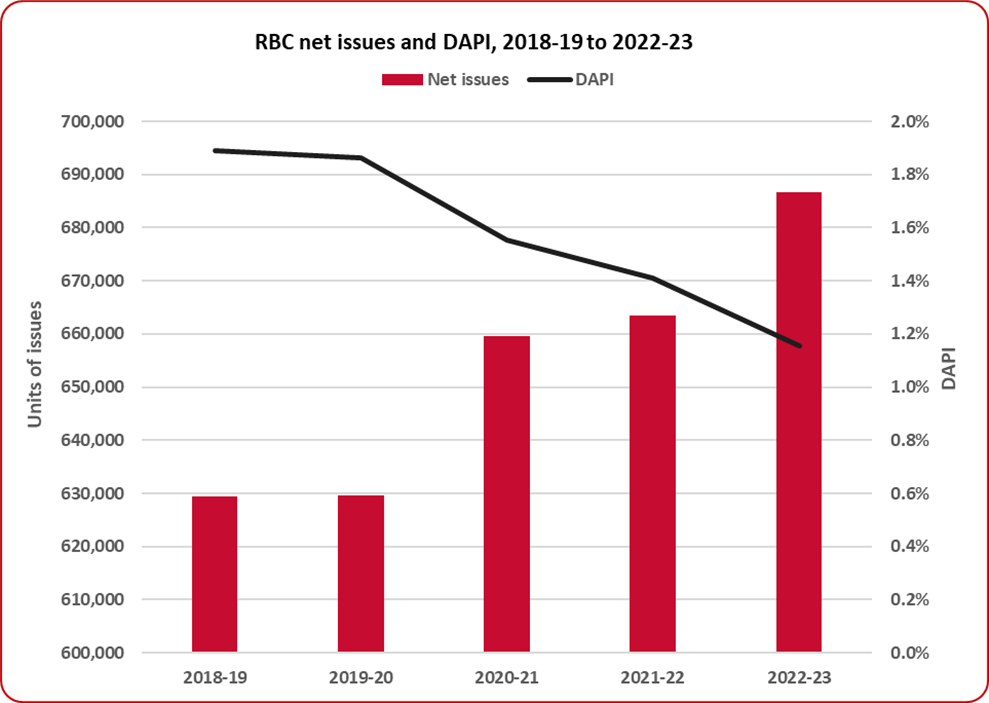

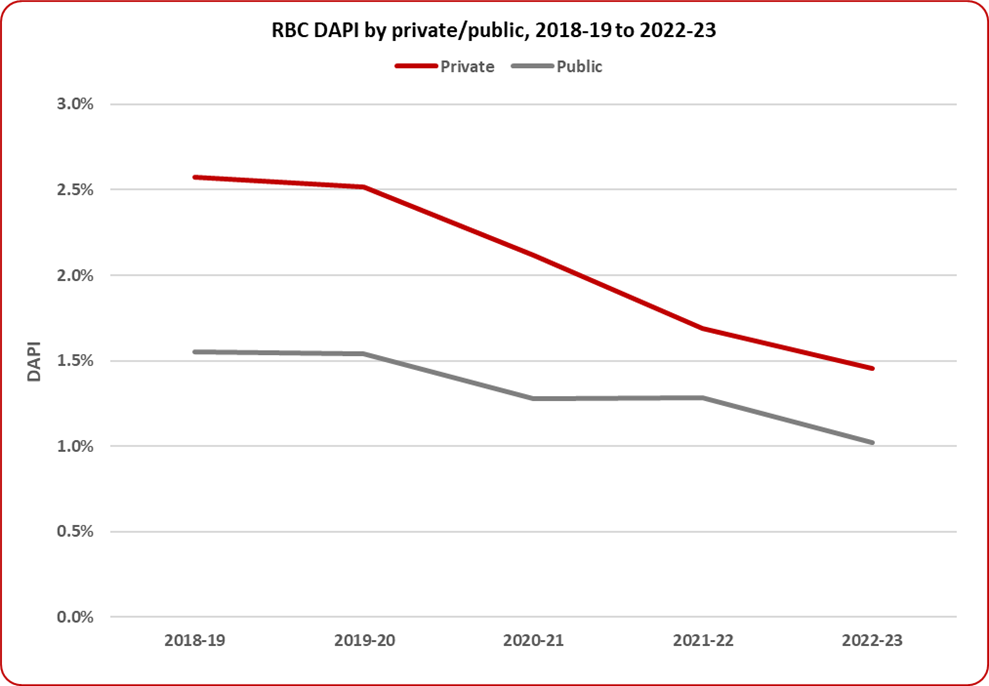

Note: The discards include supplier faults

Note: The discards include supplier faults.
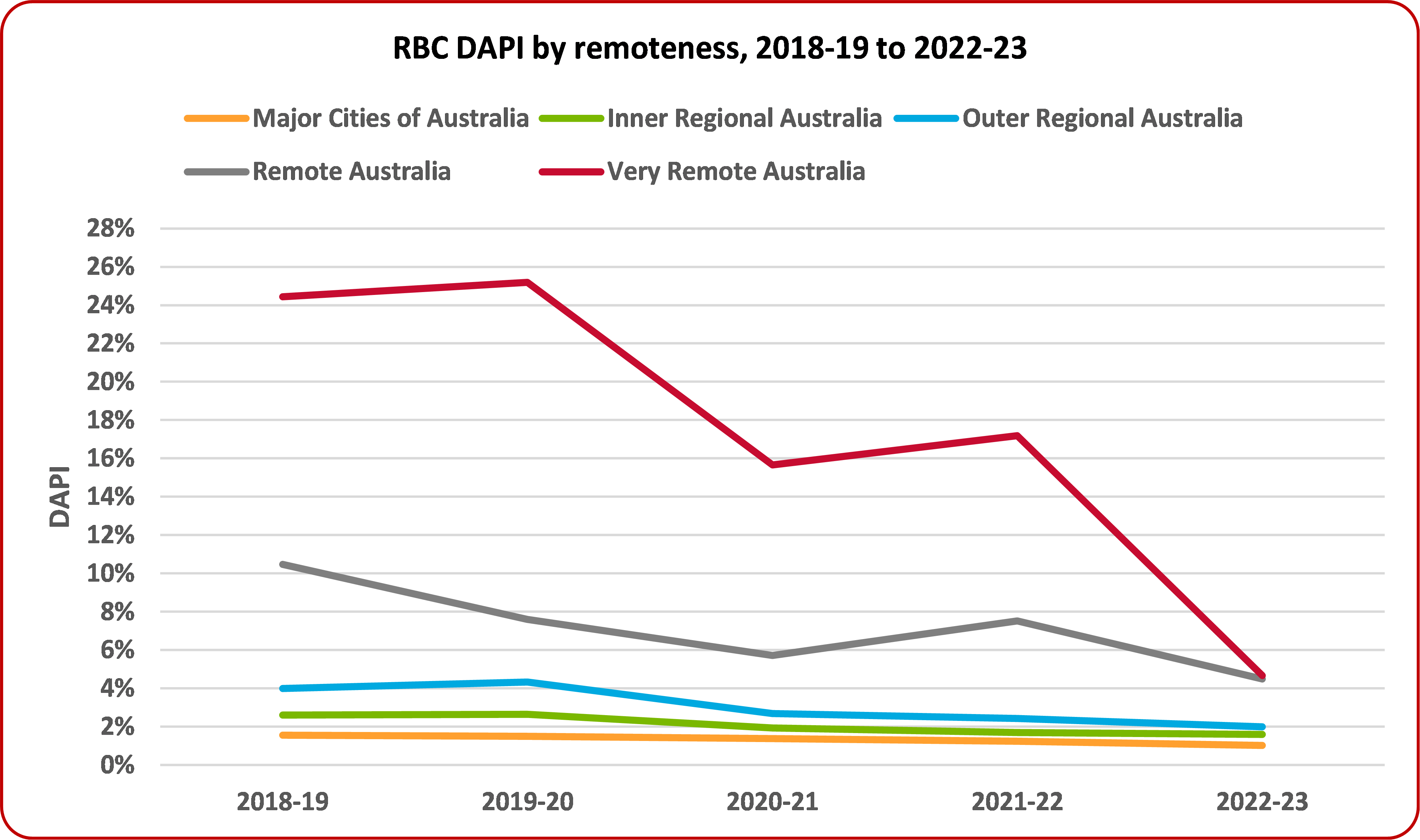
Notes
1. Remoteness data is based on the ABS Australian Statistical Geography Standard remoteness area (ASGS-RA) classification
2. Supplier fault discards were excluded from the calculation of DAPI

Note: Supplier fault discards were excluded from the calculation of DAPI
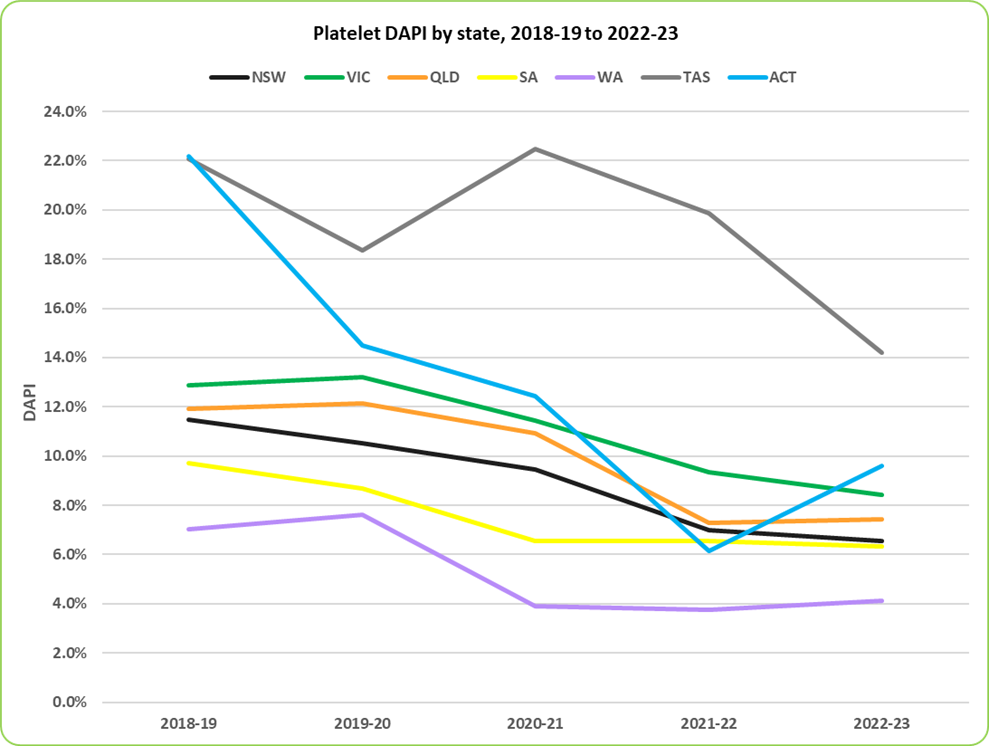
Platelet DAPI in the NT decreased from 68.6% to 37.2% during the reporting period. The number of issues and discards were low.
Note: Supplier fault discards were excluded from the calculation of DAPI
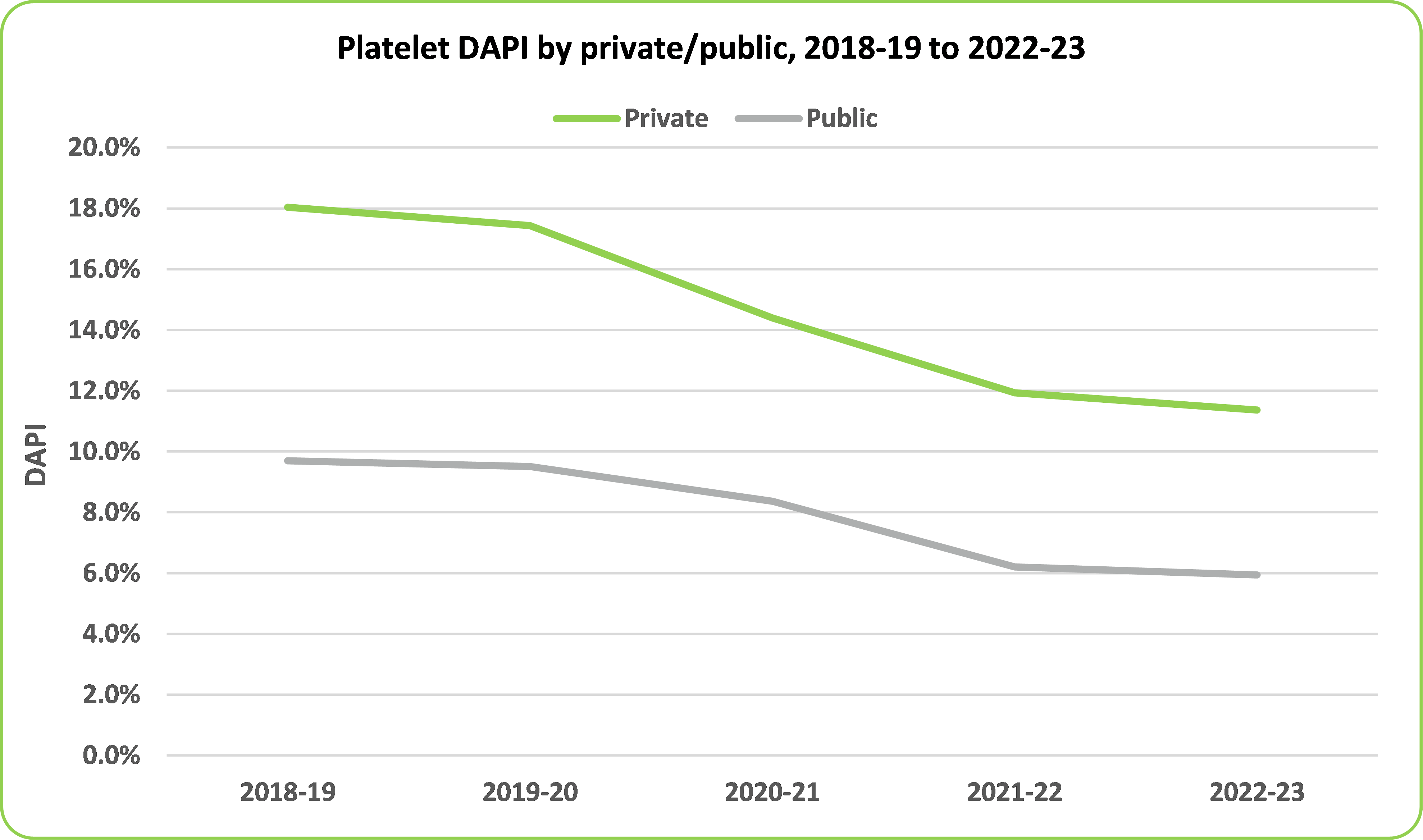
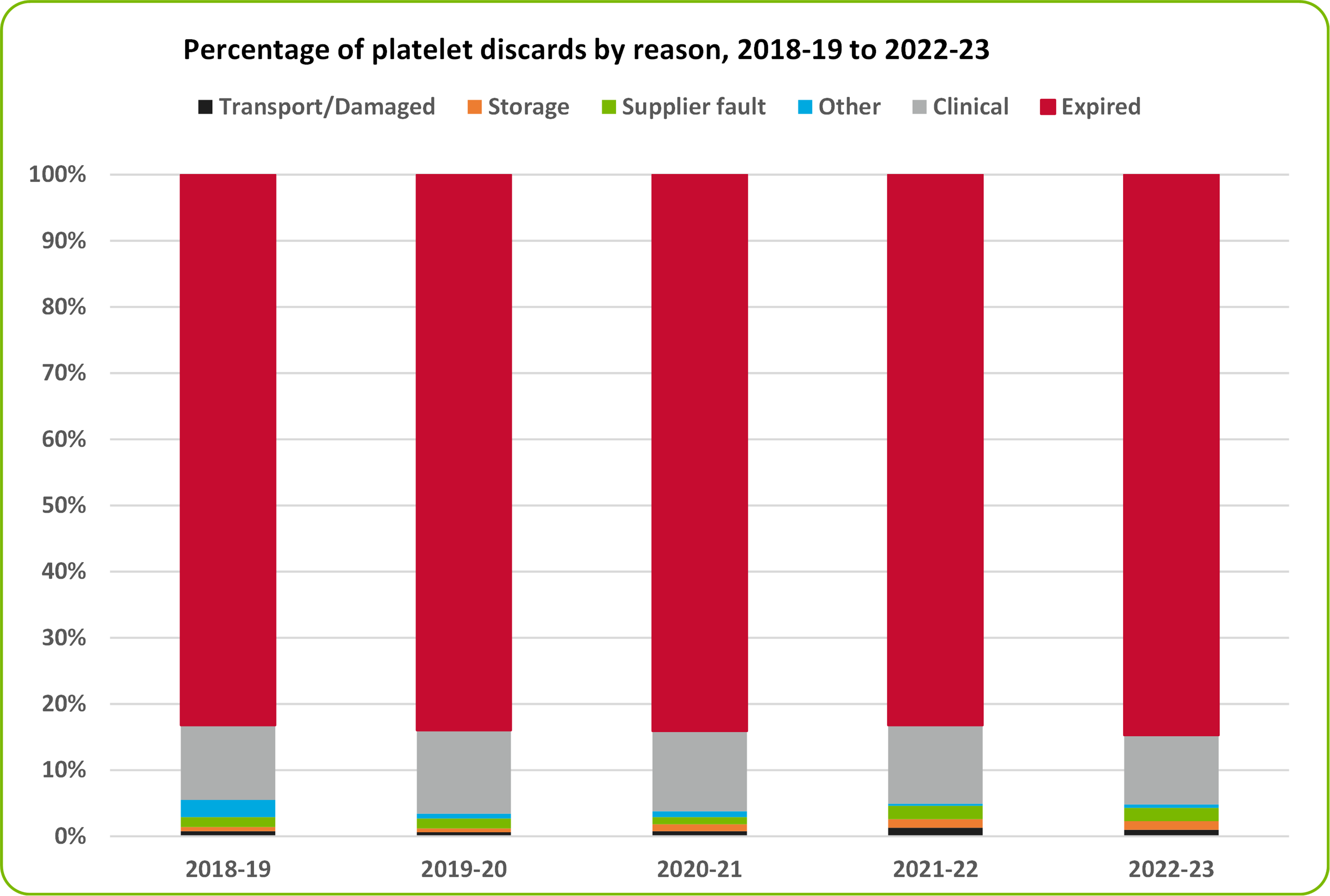
Note: Transport and Damaged reason data are combined due to the small percentages.

Note: AB+ and AB- might not the shown on the graph due to small numbers

Notes:
1. Very remote Australia is removed from the chart due to very low issues, transfers and discards.
2. Remoteness data is based on the ABS Australian Statistical Geography Standard remoteness area (ASGS-RA) classification.
For more information
Email support@blood.gov.au
Call 13 000 BLOOD (13 000 25663).

